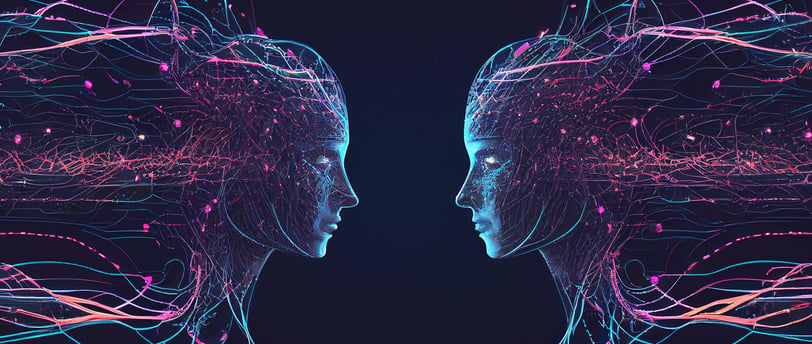Understanding Large Language Models: GPT, DeepSeek, and Beyond
Artificial intelligence has come a long way, and large language models (LLMs) are leading the charge in this transformation. Whether it’s chatbots holding natural conversations, AI-powered writing tools, or advanced coding assistants, models like OpenAI’s GPT and DeepSeek are changing the way we interact with technology. But what exactly are these models, and why are they so powerful? Let’s break it down.
AI TECHNOLOGIES


1. What Are Large Language Models?
Imagine having a super-intelligent assistant that can read, write, and understand language almost as well as a human. That’s what large language models do. They’re trained on massive amounts of textbooks, articles, and websites—to recognize patterns, predict words, and generate responses that feel natural and meaningful. They’re essentially giant neural networks fine-tuned to process and generate text just like we do.
2. GPT: The AI That Powers Conversations
One of the most well-known LLMs is OpenAI’s Generative Pre-trained Transformer (GPT). Whether it’s answering questions, assisting with creative writing, or even generating code, GPT models are designed to understand context and produce human-like text. Their ability to engage in meaningful conversations has made them a go-to for chatbots, virtual assistants, and beyond.
3. DeepSeek: A New Challenger in AI
DeepSeek is another rising star in the AI world. It’s built to push the boundaries of language comprehension, with a strong focus on multilingual capabilities. This means it’s great at understanding and generating text in multiple languages with high accuracy. DeepSeek is also designed to minimize biases and enhance the quality of AI-generated content, making it a serious contender in the AI space.
4. How Are LLMs Trained?
Training a language model is like teaching a child to read and write—but on a massive scale. These models consume enormous datasets, learn from them, and identify patterns in how words and phrases are used. They’re then fine-tuned to improve accuracy and make their responses more natural and relevant. This process is what allows them to generate text that sounds smooth and realistic.
5. Where Are LLMs Used?
Large language models are already shaping many industries:
Chatbots & Virtual Assistants: AI-powered tools like ChatGPT and DeepSeek are making customer service and daily interactions smoother than ever.
Content Creation: Writers and marketers use AI to draft blogs, stories, and even scripts, cutting down on brainstorming time.
Coding Assistance: Developers rely on AI to suggest code snippets, debug issues, and boost productivity.
Translation & Language Learning: AI is breaking down language barriers by improving translation accuracy and helping people learn new languages.
Medical & Scientific Research: AI is speeding up discoveries by helping analyze complex research papers and medical data.
6. Challenges and Ethical Concerns
Despite their impressive abilities, LLMs aren’t flawless. Since they’re trained on vast amounts of data, they can sometimes produce biased responses. Misinformation is another concern—AI-generated content isn’t always 100% accurate. On top of that, training these models requires huge amounts of computing power, raising environmental questions. Addressing these challenges is crucial to making AI more ethical and sustainable.
7. What’s Next for Large Language Models?
AI is evolving at an incredible pace, and the next generation of LLMs will be even smarter and more efficient. We can expect improvements in real-time learning, better contextual understanding, and AI that aligns more closely with human values. As these models continue to improve, they’ll become even more integrated into our daily lives, making AI an even more powerful tool.
Final Thoughts
Large language models like GPT and DeepSeek are changing the way we communicate with AI. They’re opening doors to incredible possibilities, but with great power comes great responsibility. As we continue refining these models, they’ll become even more reliable, ethical, and useful in our everyday digital experiences. The future of AI is just getting started.
